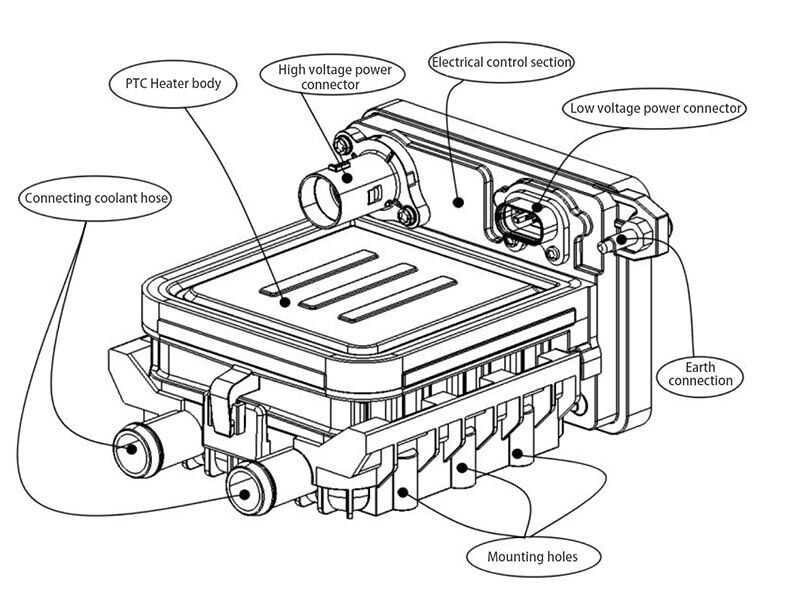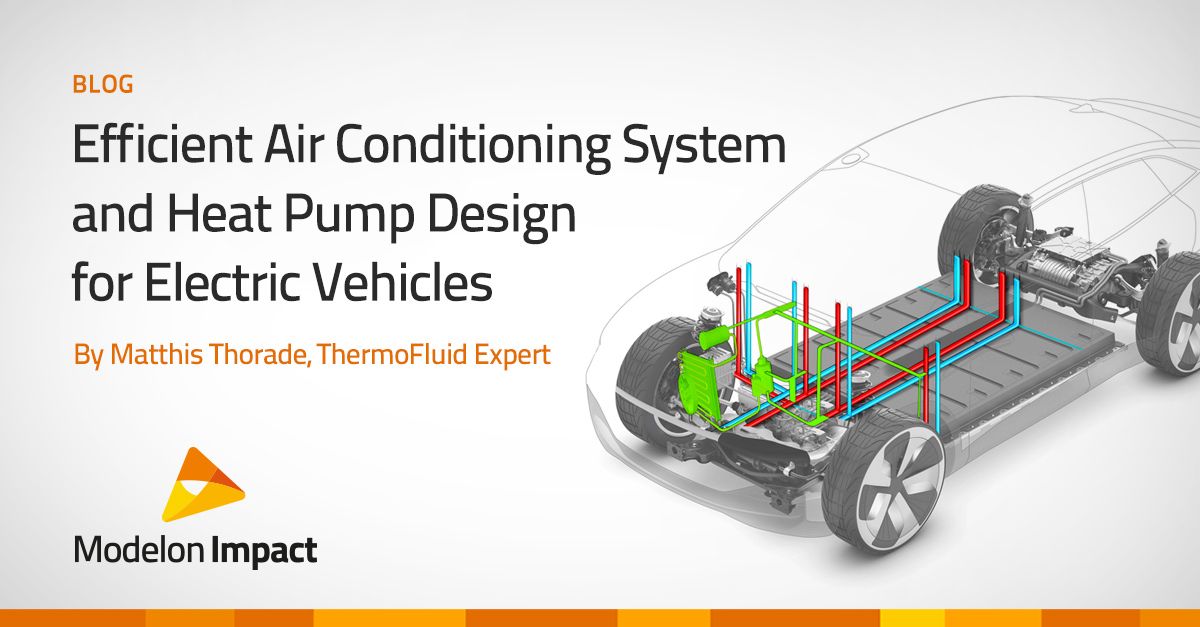Welcome to the age where electric cars rule the roads. Whether it’s Tesla’s Model 3 or Chevrolet’s Bolt EV, the technology is more accessible than ever. But what about their HVAC systems? How do these steel wonders magic up warmth in winter or offer cool respite in summer, without guzzling battery life? And more importantly, how efficient and functional are they? Buckle up; we’re taking a deep dive into the world of electric car heaters and air conditioners to answer these questions and more.
Understanding the Concept of Electric Car Heaters

The ritual of a cold morning’s initial warm-up in a traditional car, where you twist the ignition, wrestle yourself into a bulky winter coat, and mentally prepare for the frigid steering wheel’s touch, is a nostalgically uncomfortable concept rendered obsolete by electric car heaters.
Change comes in the form of a simple scenario. You stroll comfortably to your electric vehicle (EV) parked in your driveway, remote starter already awake and at work, and the cabin is warm, welcoming and free of the icy menace usually associated with winter mornings. It’s magic, practically speaking. But what is really at work is a well-planned system that revolves around careful energy management.
Electric vehicles are known for their immediate torque, silent operation, and energy recuperation properties. Yet, the often overlooked technology they integrate for climate control–in this case, the heater–is a marvel in its own right. Traditional combustion cars are reliant on engine-produced heat for warmth, essentially recycling the lost, otherwise wasted energy. The heat that a gasoline engine produces is plentiful and effectively ‘free’, at least by the car’s performance standards.
However, electric machines, with all their modern chic, lack that old-fangled, readily available source of heat. Enter the electric car heater, a solution aimed to deliver similar warmth but with an entirely different approach. Using high-voltage batteries, they produce heat directly in much the same way a residential electric heater does. Electric resistance heating turns electric energy into heat energy by sending an electric current through a resistive heating element.
But what about efficiency, you might ask? Well, the method is surprisingly effective, if not the most energy-conserving. The main hurdle is the substantial amount of electricity siphoned off by this method, which in traditional terms is like fuel being burned. But unlike the exhaust-to-heat recycling, this process offers the possibility of focusing the heat exactly where it’s needed, be it the cabin, the seats, or the steering wheel. This lends to greater overall energy efficiency compared to the blanket warming approach of combustion vehicles.
Simply put, electric car heaters harness seemingly mundane science to deliver remarkable results. Utilizing the power of their sophisticated high voltage batteries, they ensure the driver’s comfort without any compromise to their eco-friendly pledge. The result is just as magical as that warm, welcoming cabin on a winter morning.
How Electric Car Air Conditioners Work

When considering the functionality of electric car air conditioners, it is relevant to understand that unlike conventional vehicles, which tap into an excess engine capacity for cooling, electric vehicles (EVs) harness the high voltage (HV) battery for their air conditioning. This is an important nuance as EVs are supremely energy-conscious automobiles, designed from ground up to maximize the utilization of every electron stored in their HV systems.
The mechanics of this work through what is known as a ‘heat pump’ system, similar in principle to your home HVAC system. Imagine a refrigerator running in reverse – that’s effectively the function of a heat pump. Rather than creating cold air, it moves heat: in summer, it shifts heat from inside the car to the outside, providing a chilled, soothing interior ambiance.
Fundamentally, the air conditioning system kicks in when the car’s temperature sensors provide feedback that the interior has warmed above the desired level set by the operator. Once alerted, the HV battery powers the heat pump, which then starts the process of transferring heat from the inside to the outside, thereby cooling the interior.
Interior air is blown across one side of a thermally-conductive coil, or ‘heat exchanger,’ picking up heat energy from the interior and shifting it to the refrigerant. The now-hot refrigerant circulates out of the car, where a second heat exchanger shifts the accumulated heat to the outside air, which is blown across it. Meanwhile, the chilled refrigerant—having lost its heat—loops back into the interior to repeat the process.
Interestingly, unlike gas-powered cars where the engine revving up or down can affect A/C performance, the A/C in electric vehicles functions consistently, as it is entirely powered by the battery pack. It’s worth noting, though, that heavy A/C use can impact the vehicle’s range due to the energy it draws from the battery.
One more thing to remember: electric car air conditioning systems also include a feature to cool down the battery itself. High temperatures can reduce the battery’s efficiency and longevity. Therefore, both the comfort of the passenger and the health of the battery are taken care of simultaneously.
In theory, managing the vehicle’s temperature sounds simple enough, but in practice, it demands a deft balancing act. The task of maintaining optimal battery performance while ensuring passengers’ comfort is a challenge engineers grapple with continually in order to provide the best possible e-motor experience. And it all becomes worth it when you can cruise around town in an environmentally friendly EV without breaking a sweat.
Comparison on the Efficiency of Electric Car Heaters vs Air Conditioners

When it comes to comparing electric car heaters and air conditioners in terms of efficiency, it’s a bit like comparing apples to oranges, only cooler or rather, warmer and cooler at once.
Let’s start with the electric car heaters. They’re not your traditional heaters that use engine heat – rather, they employ resistance heating, similar to what you’d find in your home HVAC system. Think of a giant electric hairdryer blowing warm air into your vehicle, and you’re not far off. Now, these devices can deliver instantaneous heat, which is great when you’re shivering and waiting for your car to warm up. But all that heat doesn’t come free, as it can be a drain on your battery – a significant consideration when you’ve got miles to go before you plug in for the night.
On the flip side, we have the electric air conditioners. These generally use heat pump systems, which sound counterintuitive, but work an absolute treat. Heat pumps function by using a refrigerant to absorb and release heat, essentially moving heat from the interior of your car to the outside world. Fundamentally, they’re battling the Laws of Thermodynamics and surprisingly, they’re winning. The result, on a good day, is chilling out in serene, temperature-controlled tranquility, without seeing your range indicator plummet through the floorboards.
Contrasting the two, more energy is generally used up when heating up a cold electric vehicle in comparison to cooling down a hot one. Variations can occur due to external factors like temperature, but all thermodynamics considered, swathing yourself in invisible toasty waves is a more energy-intensive process.
So, the call here goes to the air conditioners – if we’re talking about range efficiency. They definitely come out the other side of the battle looking a bit fresher, and with more bars left on the battery life. Yet, it’s not all sunny skies for the cool kids, as misuse, overuse, or a disputably nice 71-degree set point can still see your range numbers drop faster than an unattended hammer in a gravity field.
Keep in mind, both heaters and air conditioners in electric vehicles have been designed and optimized for the maximum usage efficiency, and they do remarkably well given the tasks at hand. But ultimately, like with most things in life, it’s all about balance and use. Or, for the poetry minded, it’s about toasty comfort on icy mornings and cool, calm rides on hot summer days, all with an eye on the power meter. Birthdays aren’t won by those who eat the most cake the quickest, after all.
Implications on Battery life: Heaters and Air Conditioners

As we delve deeper into the functionality and efficiency of electric car heaters and air conditioners, one critical aspect we haven’t yet fully touched upon is how these systems affect the battery life of these vehicles. It’s crucial to understand that energy usage in electric cars extends beyond merely turning the wheels. Any energy-consuming feature, from charging your phone to blasting the AC, taps into the same power source: the car’s battery.
Heating systems in electric cars can be a particular energy hog. For example, when you flip on the heater on a chilly morning, the noticeable drop in available range is primarily because the heating system utilizes a significant amount of battery power. This is worse in severe cold conditions where the heating demand is much higher, leading to substantial range loss.
On the other hand, an air conditioner can be equally taxing on an electric car’s battery. Cooling an enclosed space, especially during a scorching summer day, requires a fair amount of energy, which means reduced driving range. While advancements in technology have led to more efficient cooling systems, it’s still a noticeable drain on the battery.
These systems’ energy demands create a challenge for electric vehicle manufacturers to balance comfort and convenience with range and efficiency. After all, no one wants a vehicle that can only drive short distances before needing to be plugged in again.
Therefore, technologies like regenerative braking and energy-efficient design improvements can assist in mitigating these energy drains. However, as an electric car owner, being mindful of your vehicle’s energy usage particularly in extreme weather conditions, can have a significant impact on your overall battery life and driving range.
It’s also critical to emphasize that these implications on battery life are not unique to electric vehicles alone. Traditional gasoline-powered cars also experience decreased efficiency in extreme temperatures, as they have to work harder to warm up or cool down as well. The difference lies in how these inefficiencies are managed or mitigated, which is a very active area of research and development for electric car manufacturers.
FAQs
How well does my electric car heater work in cold weather?
Do electric car air conditioners also cool my beverages?
Does using my AC in an electric car reduce my range?
Conclusion
Ultimately, both heaters and air conditioners in electric cars present unique challenges and advantages when it comes to efficiency and functionality. However, with the continued advancements in technology, these systems are becoming more effective and less taxing on the battery life. As electric cars further evolve, the ensuing sophistication in these thermal management systems will only provide a more seamless and convenient driving experience. It’s clear that the future of automotive heating and cooling is electric—and that future looks promising.
